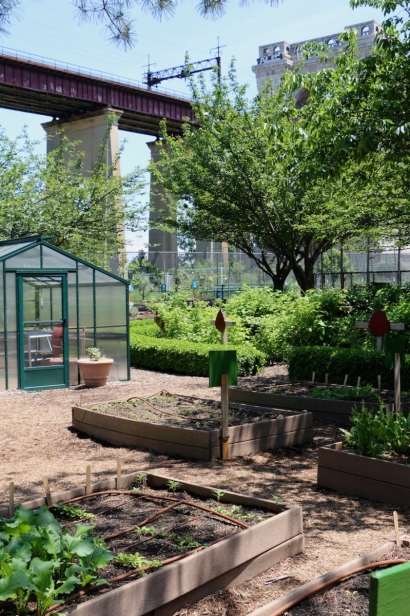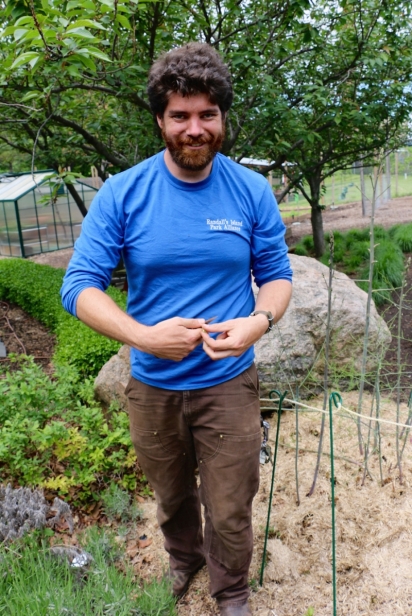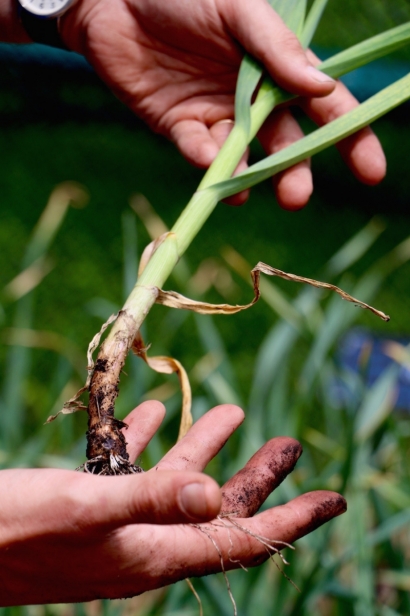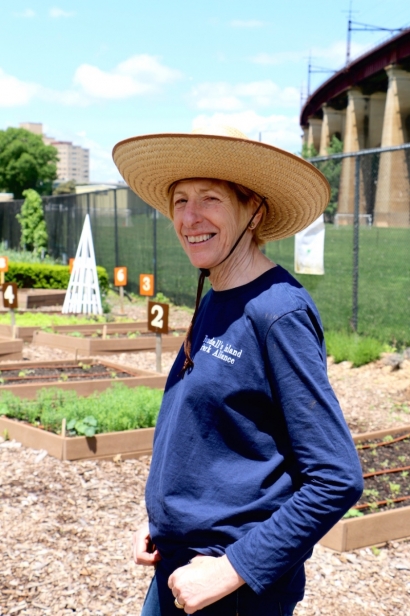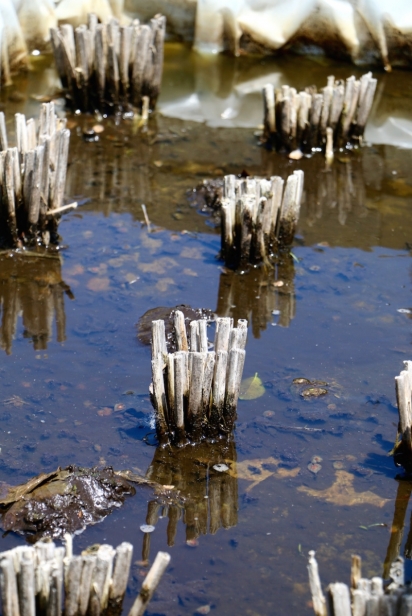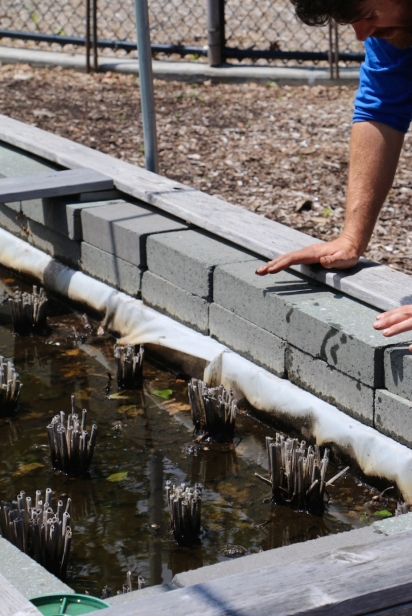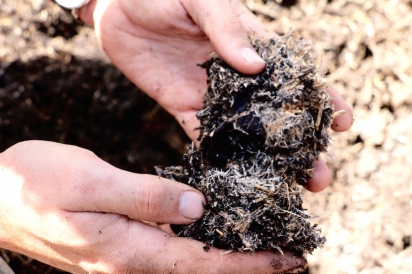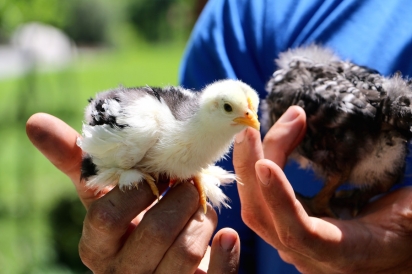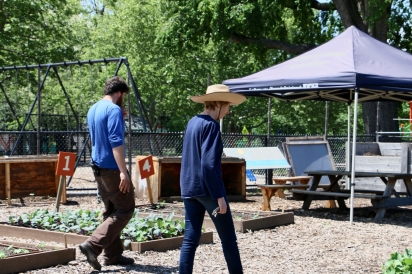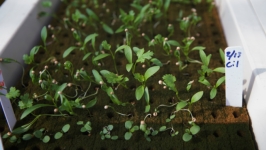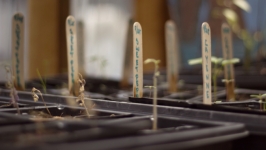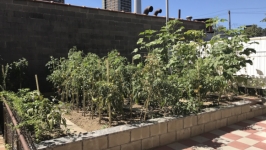A Farm in the East River
When you hear the word “farm,” New York City doesn’t seem like the ideal landscape for fertile farmland, at least not in this century. Nevertheless, in recent years farming has become an important part of city life and urban development.
As a native New Yorker, I’m embarrassed to say I had never been to Randall’s Island before my visit to Randall’s Island Farm, a slice of land that lies between the Bronx and Upper Manhattan in the East River.
Until recent years, the only direct access to Randall’s Island was the Robert F. Kennedy Bridge (formerly known as the Triborough), which, without a car or a hefty cab fare, was out of reach for many Bronx residents—despite the Bronx being the borough with the closest proximity to the island’s vast green space. Accessibility improved in 2015, when the greenway connector located in the Port Morris neighborhood of the Bronx opened to the public, creating a direct footpath to the island.
The Randall’s Island Farm offers a 40,000-square-foot retreat of edible plants, chickens, and trees. Nick Storrs, the farm manager, is the perfect tour guide as he takes us through all the happenings at the farm, which welcomes droves of elementary school kids per week.
“Because we’re in the middle of the East River, a lot of our access is geared towards Manhattan and the Bronx so far; as a result, that’s where a lot of our school participation is from,” he says.
East Harlem and South Bronx schools, in particular, utilize the Urban Farm Education Program, designed to provide students with the opportunity to plant, harvest and compost. The program also teaches students about sustainability by way of rainwater capture, crop rotation, fertility, and pollination.
“It’s very tactile learning here, in a way that connects with kids who struggle with a classic learning situation,” says Nick. “It’s very kinetic. It’s communal learning.”
Within the garden lies a treasure trove of edible plants, companion plants, trees, and herbs, spread out in 80 raised beds and two greenhouses. In the summer, berries, tomatoes, peppers, melons, leafy greens, fresh herbs, garlic, and grains can be found flourishing alongside medicinal plants like mugwort and chamomile. Ten chickens, raised in New York City from chicks, can be seen roaming designated areas of the farm.
At the south end of the farm lies something extraordinary: four 24-foot-long beds serving as rice paddies, a common commodity not usually found growing in New York City. The project, started by EunYoung Sebazco, the farm’s manager of horticulture, “she grew up in Korea and lived in Japan for a while,” says Nick. “EunYoung was the one who realized that we’re about the same latitude as northern Japan. Rice grows and develops based on day length, which is dependent on latitude.”
The just-for-fun project started with one Japanese variety in one bed, which thrived. So they added more beds and, after connecting with Italian rice farmers, they’re now exploring rice varieties from all over the globe. The beds are flooded and hold thousands of gallons of water, with fresh water added daily from rain barrels. By the time kids return to school in the fall, the rice is ready to be harvested.
“I love growing the rice because a lot of what we want to do is get kids to notice their food. We want them to pay attention as they eat—to taste it, not just chew and swallow. And learn the backstory of it. Rice is something our kids are eating every day, sometimes multiple times a day, and they never see the rice. It’s just a canvas for the rest of the meal,” says Nick.
Another distinctive feature of the farm is the apple orchard, consisting of 57 trees. Particularly the Newtown Pippin, a variety that was developed in Queens near Newtown Creek about 300 years ago. Nick recalls a fun anecdote about the variety: “When Thomas Jefferson and George Washington were arguing about the agriculture of a new nation and what should be a fundamental part of that economy, they would argue about varieties of apples, and Newtown Pippin was one that was thrown in as one of the best apples.” In addition to the historic heirloom variety, they also have varieties that Cornell researchers gifted them, harvested from trees in Kazakhstan, where apples are native and grow in the wild.
The farm grew little by little since opening in 2010. “I think we’ve reached our capacity,” says Phyllis Odessey, director of horticulture. “I don’t think we’re going to get any more space. It [the farm] became more and more popular, and we had Nick and then a staff, and we wanted to do more things.”
“The farm evolved very organically” into what it is today, adds Nick. “We’re very lucky that we have plenty of space. It’s a lot to maintain. We don’t need more space. We’re finding a lot of ways we can grow our programming to fill that space.”
One future addition to the farm that excites Nick is an outdoor interactive soil lab, one that allows farm visitors to learn about different soils throughout the farm, park and all of New York City, examining soil health, different types of rocks, and their origins. “I want to do a station that demonstrates the effects of erosion and how we mitigate it with mulch and cover crops and growing spaces help protect and hold on to that soil,” says Nick. “The soil ecosystem is the foundation of the food pyramid. It’s the foundation of life on Earth, and we all rely on healthy soils.”
While students make up a lot of their weekday visitors, they want to farm to become a destination for all of New York City. “The last few years we started making sure we’re open seven days a week with our farm exploration days, and so rather than having scheduled programing with just school and summer camps we’re now making sure we have space where the doors are open to the public,” says Nick. “Anyone can just come wandering through, take photos, taste something, interact with the garden and learn how food is grown.”
Wards Meadow Loop, New York, NY



